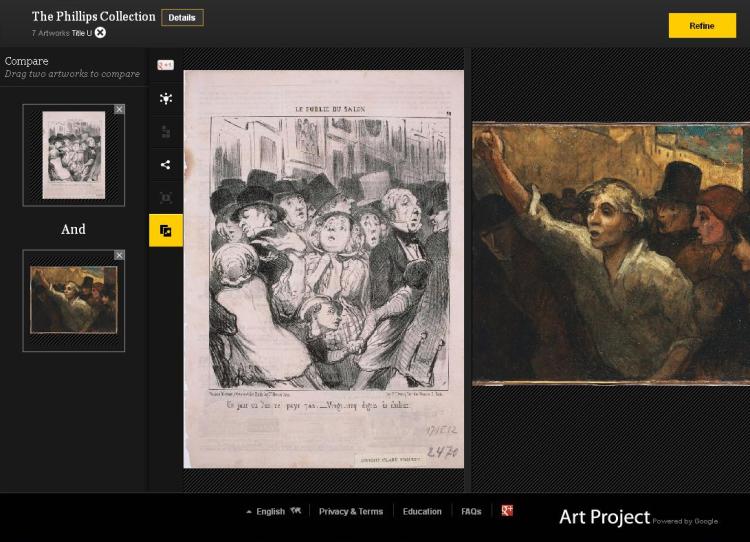
Google Art Project comparison of two works that feature crowds by Honore Daumier in The Phillips Collection: at left, Le Public du Salon: Un jour où l’on ne paye pas…, 1852. Lithograph on paper. 14 1/8 x 10 in. Gift of the Dwight Clark Bequest; at right, The Uprising (L’Emeute), 1848 or later. Oil on canvas, 34 1/2 x 44 1/2 in. Acquired 1925
With the presidential inauguration just days away, with an estimated 600,000 to 800,000 people expected to gather, now’s the perfect time to revisit the small but captivating gallery of political cartoons by Honoré Daumier and Patrick Oliphant on view through January 31.
Daumier, especially, seems to have a penchant for depicting crowds of people in his works. Daumier’s lithograph Le Public du Salon (1852) packs in a mass of people attempting to navigate an art salon. Everything about the piece is crowded, from the bustling figures to the artworks hung closely together on the walls. A woman stands in the foreground, a harrowed expression on her face as she nervously pushes her way through the crowd while those around her demonstrate similar exasperation.
Daumier’s lithograph hangs alongside Oliphant’s work, aptly titled Homage to Daumier (2000). This piece references another work by Daumier in the collection, The Uprising (1848 or later). One of Duncan Phillips’s favorite paintings that he owned, the museum founder described it as a “symbol of all pent up human indignation.” The painting depicts another crowd, this one dominated by a light-haired figure gesturing forcefully across the canvas, his emotional expression echoed in the faces of all those behind him. In Oliphant’s appropriation of the work, the artist depicts himself alongside The Uprising, joining the crowd in a sense with a look on his face of intense concentration and, perhaps, anxiety reflecting his own contemporary sense of political turmoil.
Elizabeth Kachavos, Marketing Intern


